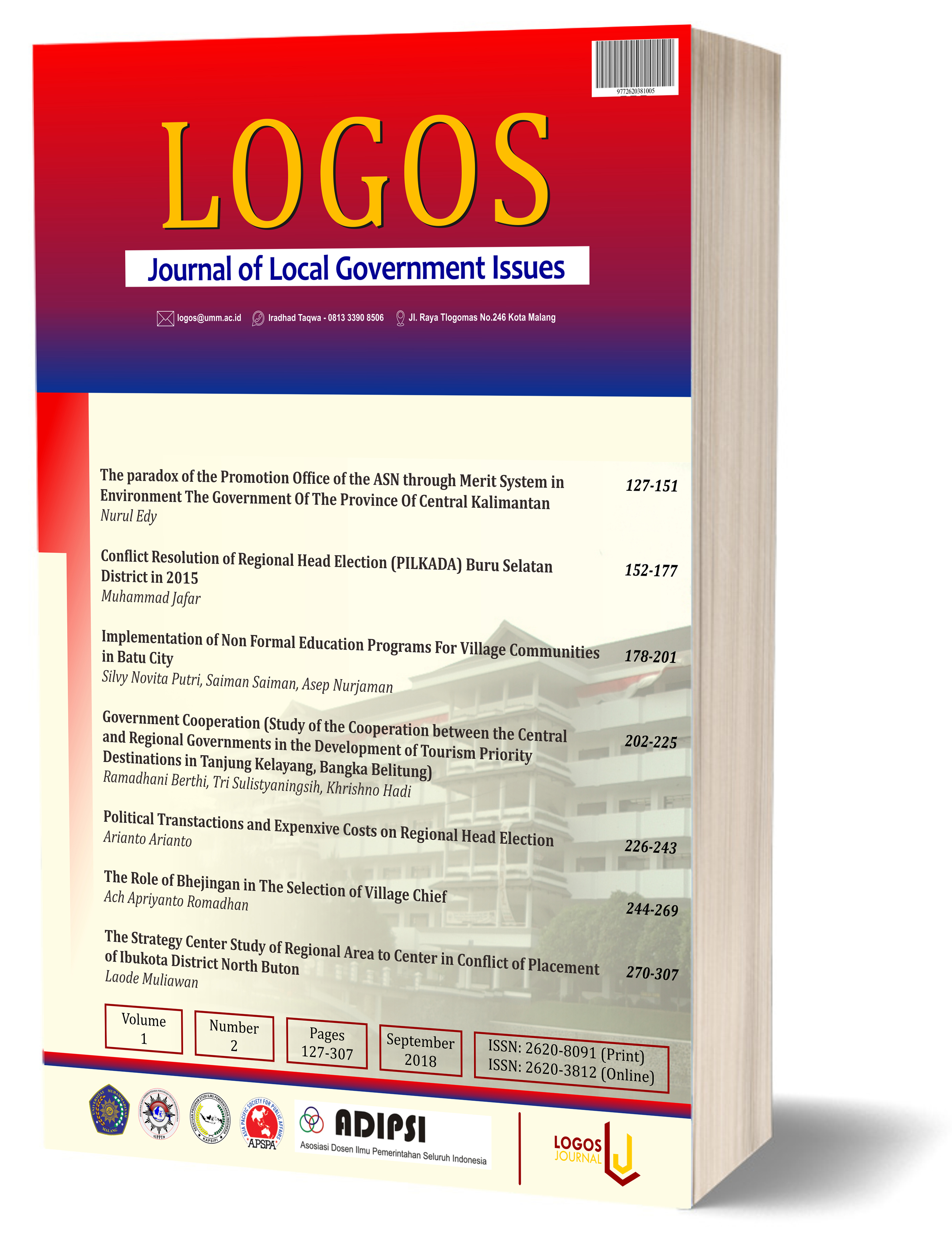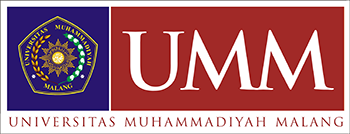Conflict Resolution of Regional Head Election (PILKADA) Buru Selatan District in 2015
DOI:
https://doi.org/10.22219/logos.Vol1.No2.152-177Abstract
The first round of simultaneous elections in 2015 included 269 regions. South Buru Regency participated in organizing the democratic party. South Buru regency elections that ended the conflict were followed by two candidate pairs Rivai Fatsey, S. STP., MPA & Drs. Anthonius Lesnusa, MM (HIKMAT) and Tagop Sudarsono Soulisa, SH., MT & Ayub Seleky, SH., MH (TOP-BU). Conflict resolution involves both HIKMAT and TOP-BU voters who are involved in the conflict with government institutionalization and local wisdom, the local kerafina approach with the aim of eliminating the politicization of customary law so that potential conflicts do not reappear. Another approach used is a familial approach in order to eliminate judgment, on the other hand, support from the government by accommodating the demands of both parties. Through the tradition of local equality and innervation, this conflict can be resolved or by using positive peace, the institutionalization of these values can influence the behavior of both parties so as not to create new conflicts. The meeting point of this conflict was the return of conflict victims and the return of non-permanent employees.
Keywords: Simultaneous Local Election, Political Conflict, Democrative Conflict Governance
Downloads
References
Devi, A. F. (2017). Tinjauan Yuridis Pelimpahan Wewenang Dalam Kegiatan Administrasi Pertanahan Bagi Penyelenggaraan Perumahan Di Kabupaten Sleman.
Fisher, S. E., Francks, C., McCracken, J. T., McGough, J. J., Marlow, A. J., MacPhie, I. L., . . . Woodward, J. A. (2002). A genome-wide scan for loci involved in attention-deficit/hyperactivity disorder. The American Journal of Human Genetics, 70(5), 1183-1196.
Poloma, M. M., & Kontemporer, S. (2004). Terj. Tim Penerjemah YASOGAMA. Jakarta: PT RajaGrafindo Persada, cet. ke-6.
Rauf, M. (2001). Konsensus dan konflik politik. Jakarta: Direktorat Jenderal Pendidikan Tinggi Departemen Pendidikan Nasional.
Setiadi, E. M., & Kolip, U. (2011). Pengantar sosiologi: pemahaman fakta dan gejala permasalahaan sosial: teori, applikasi dan pemecahannya: Kencana.
Soeryo, S. T. (2005). Manajemen konflik sosial: Restu Agung.
Suprapto, S. (2013). Revitalisasi Nilai-Nilai Kearifan Lokal Bagi Upaya Resolusi Konflik. Walisongo: Jurnal Penelitian Sosial Keagamaan, 21(1), 19-38.
Susan, N. (2009). Sosiologi konflik & isu-isu konflik kontemporer: Kencana Prenada Media Group.
Toha, S., & Ngah, U. (2007). Computer aided medical diagnosis for the identification of malaria parasites. Paper presented at the Signal Processing, Communications and Networking, 2007. ICSCN'07. International Conference on.
Downloads
Published
How to Cite
Issue
Section
License
Copyright (c) 2018 Muhammad Jafar Loilatu, Yana Syafrieyana, Vina Salviana

This work is licensed under a Creative Commons Attribution-ShareAlike 4.0 International License.
Authors who publish with this journal agree to the following terms:
- Authors retain copyright and grant the journal right of first publication with the work simultaneously licensed under a Creative Commons Attribution-ShareAlike 4.0 International License. that allows others to share the work with an acknowledgment of the work's authorship and initial publication in this journal.
- Authors are able to enter into separate, additional contractual arrangements for the non-exclusive distribution of the journal's published version of the work (e.g., post it to an institutional repository or publish it in a book), with an acknowledgment of its initial publication in this journal.
- Authors are permitted and encouraged to post their work online (e.g., in institutional repositories or on their website) prior to and during the submission process, as it can lead to productive exchanges, as well as earlier and greater citation of published work (See The Effect of Open Access).

This work is licensed under a Creative Commons Attribution-ShareAlike 4.0 International License.













